Making your own compost is a wonderful way to reduce kitchen and yard waste and create your own nutrient-rich soil amendment that can boost plant growth and help you establish a healthier garden. But if you’re new to working with compost, you may not know what to do with this dark, nutrient-rich product after you’ve harvested it from your compost pile.
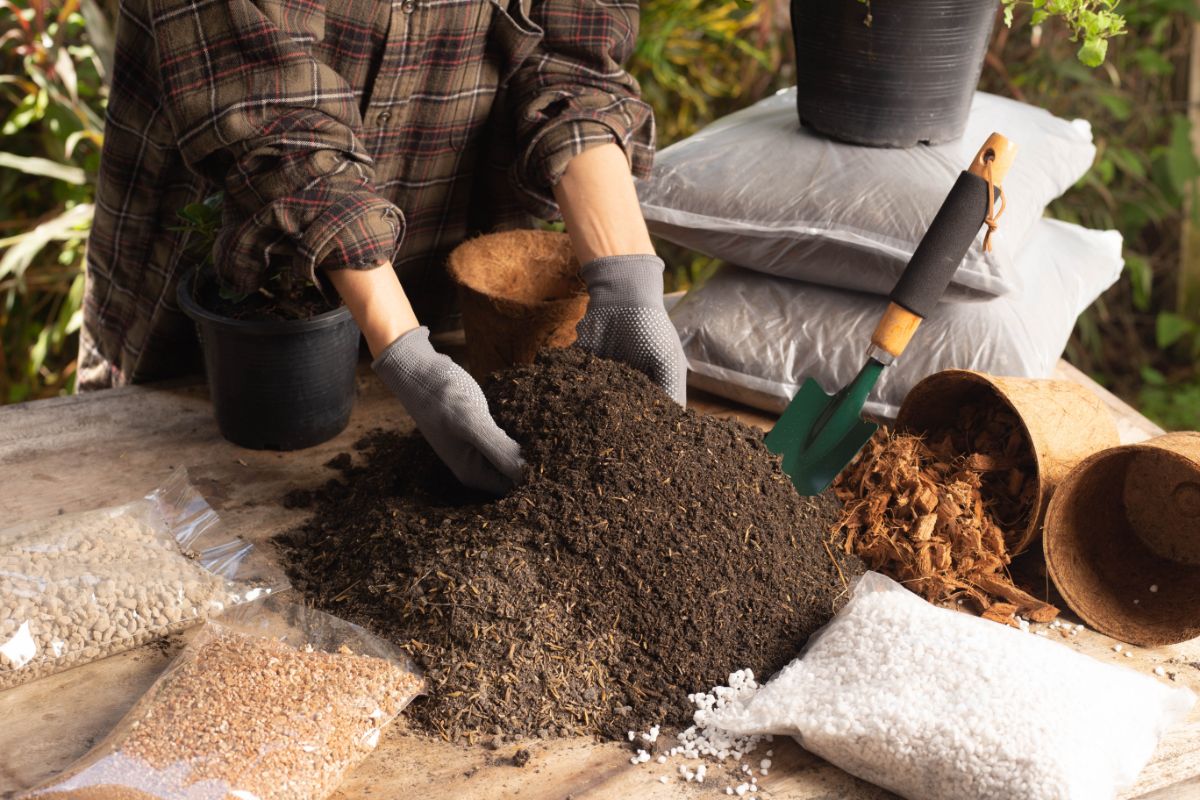
While compost is one of the most useful ingredients that you can have in an organic garden, it is also incredibly versatile. Compost can make plants more resistant to pests and diseases, it improves soil quality, and it can be used for other purposes too. In the list below, you’ll find some of the best ways to use homemade compost on indoor and outdoor plants to produce a larger harvest of edible produce, grow armloads of stunning flowers, and so much more!
Jump to:
- 11 ways to use compost in vegetable and flower gardens
- 1. Amend your soil
- 2. Use it as a top dressing
- 3. Side dress plants
- 4. Brew compost tea
- 5. Mulch your gardens
- 6. Make your own potting mix
- 7. Grow better melons and pumpkins
- 8. Refresh your houseplants
- 9. Perk up perennials
- 10. Feed bulbs
- 11. Spruce up your lawn
- Frequently asked questions
- Summary
11 ways to use compost in vegetable and flower gardens
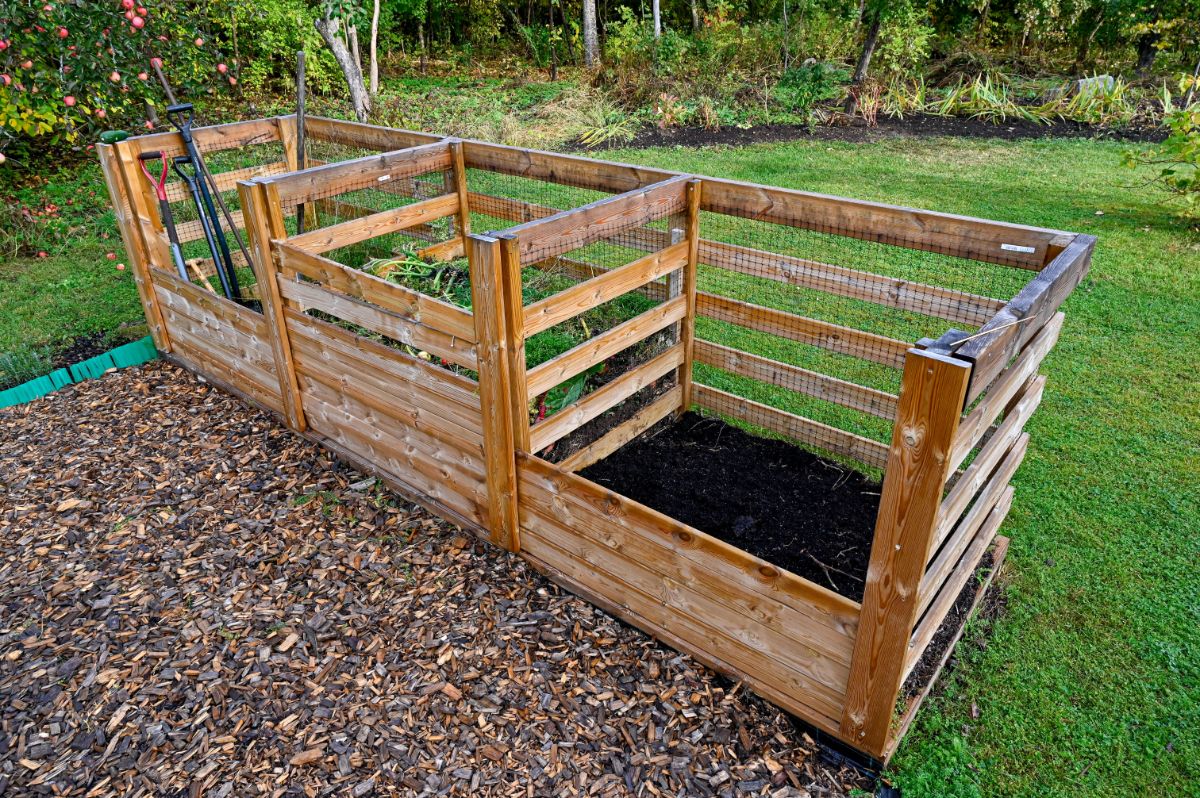
Whether you just made a small amount of compost with an indoor composting bin or you have a large outdoor pile of compost that needs to be used up, there are lots of reasons to add compost to garden beds and containers too. From mulching to creating top-quality DIY potting mixes, below are some of the top ways gardeners use compost today!
1. Amend your soil
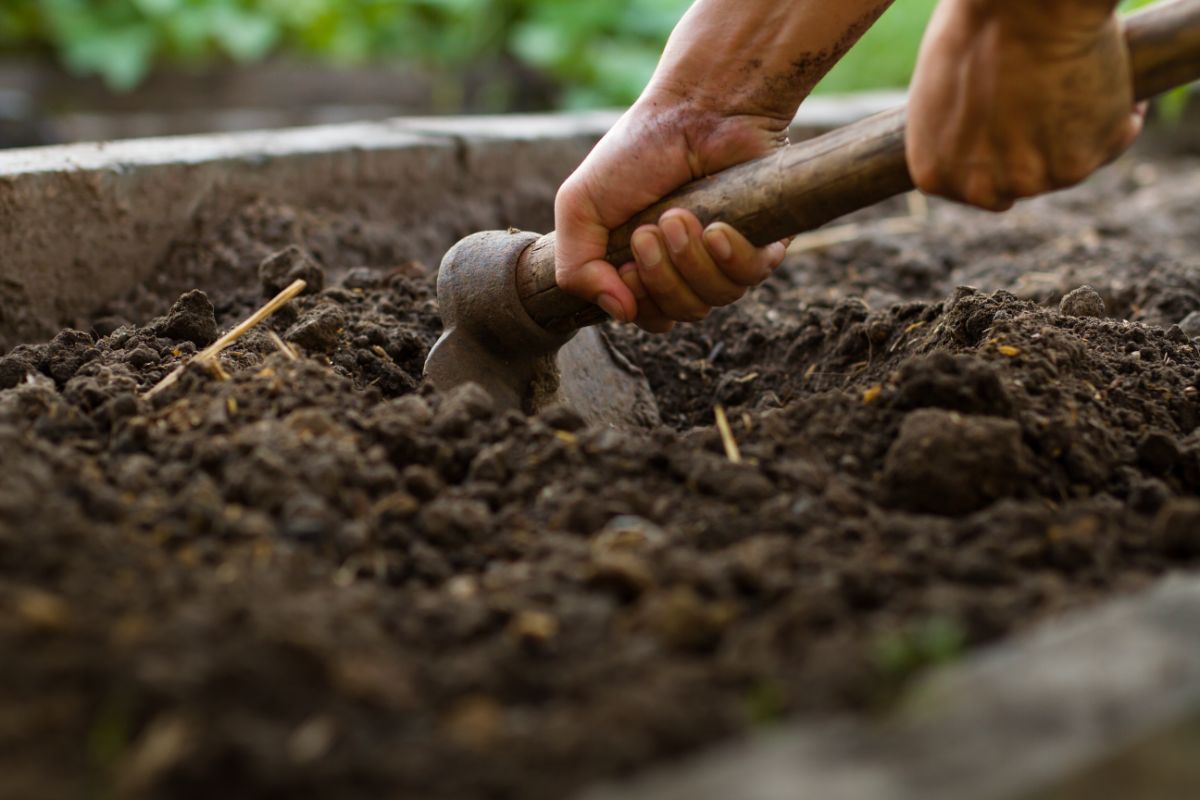
Whether you’re starting a new garden or reviving beds that you’ve been growing plants in for several years, amending your soil with compost is an easy and effective way to boost soil health and grow lusher plants. All you need to do is spread about 2 to 4” of compost across your garden beds and then work it into the top 6” of soil with a shovel or hand tiller. This can be done in either spring or autumn, and usually, ornamental beds will need a bit less compost than vegetable beds.
Amending garden soil with compost offers tons of benefits. Compost is rich in the macro- and micronutrients that plants need to grow, and compost can also make plants more resistant to pests and diseases. Over time, gardens become depleted of nutrients, but adding compost in this manner can revive spent soil.
In addition to adding nutrients, compost can also improve the health and composition of the soil itself. Compost boosts the activity of beneficial organisms, like earthworms, and it also makes it easier for soil to drain properly and retain water too. Even better, compost is one of the best ways to correct soils that are too heavy in either sand or clay.
2. Use it as a top dressing
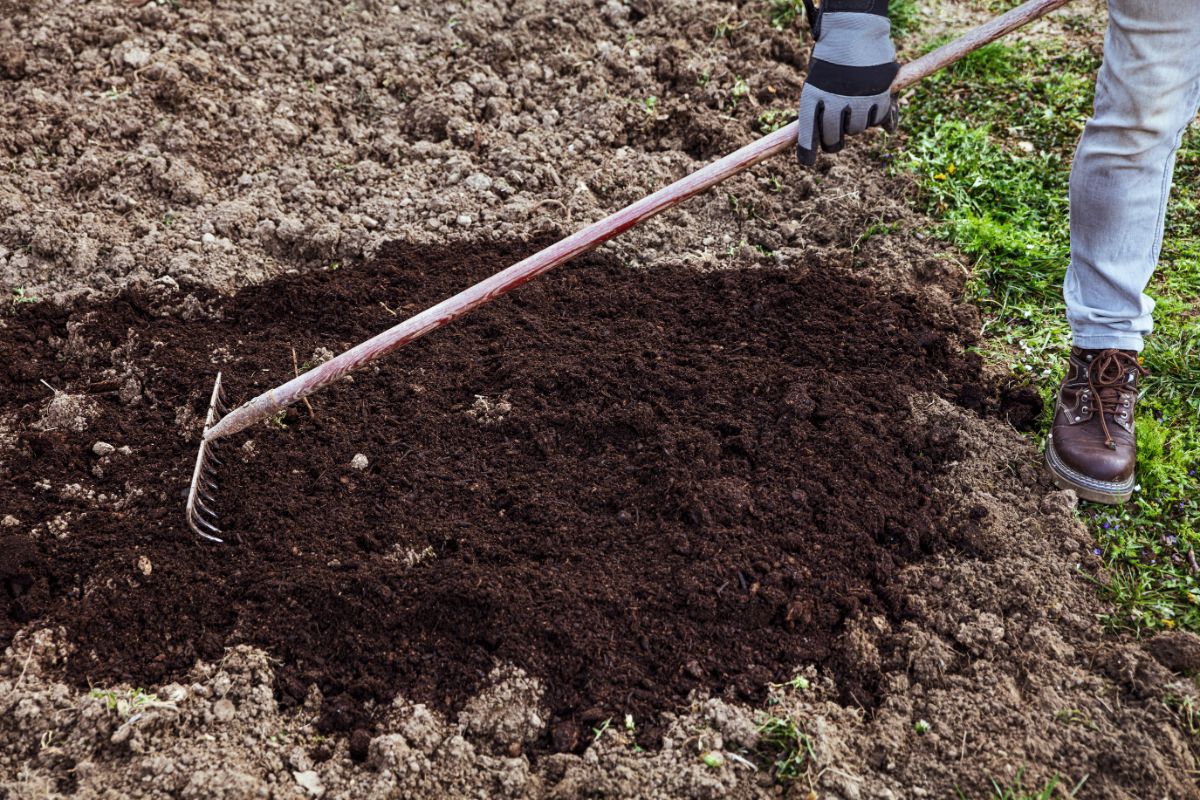
Amending soil with compost is a good way to address soil issues and rejuvenate garden beds, but if you just want to maintain the health of an established garden, top-dressing beds with compost can work quite well. This is also a lower-intensity way to use compost, and it can be incorporated into your annual garden maintenance regime.
To top-dress garden beds, simply sprinkle 1 to 2” of compost across your beds and then leave it in place. There’s no need to mix a top dressing of compost into your soil because the layer of compost is thin and will become naturally incorporated into your beds by rain, earthworms, and other factors. The best time to top dress gardens is either in early spring or late autumn when there are no plants in your garden.
Plants grown in containers can also benefit from a top dressing of compost, although you may want to use less compost, depending on the size of the pots you’re working with.
3. Side dress plants

Throughout the growing season, you can also side-dress plants with compost to give them an extra bit of nutrients. This can be particularly useful for heavy-feeding plants, like pumpkins and squash, but it is also easy to apply around light feeders or plants that are grown in rows. Adding compost during the growing season can support your plant’s health and often results in a larger harvest of fresh vegetables and stunning flowers.
To use compost as a side dressing, simply scatter a few handfuls of compost around the base of your plants. To avoid stem burn or rot, never place compost directly against plant stems, but rather leave about 1” of space between the stem and your line of compost.
Alternatively, you can also spread 1” of compost between rows of growing plants. Using compost in this way will perk up your plants, but it won’t disturb their roots since there is no tilling needed.
4. Brew compost tea
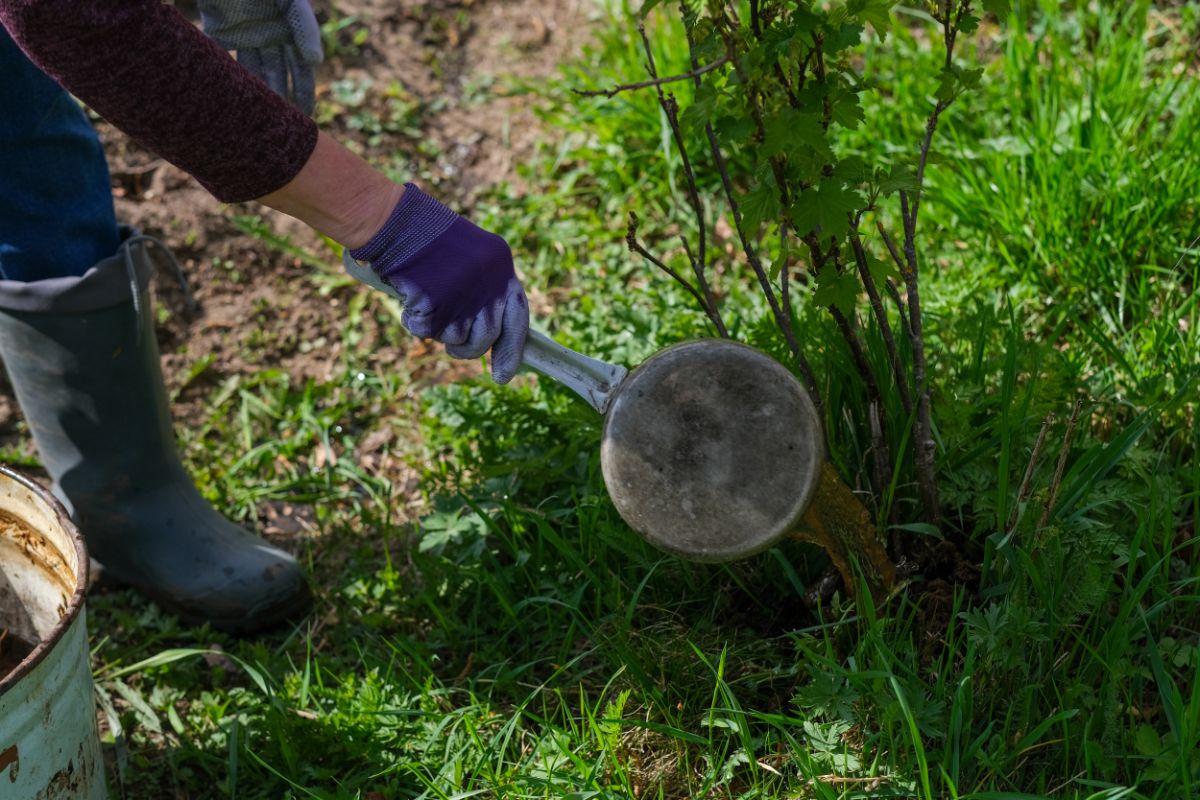
Like worm castings, compost can also be brewed into a natural liquid fertilizer that can be used on houseplants, garden plants, and lawns as well. The resulting compost tea is very easy to apply, and it can enrich your plants with the nutrients they need to grow. Additionally, when used as a foliar spray, compost tea may prevent certain plant leaf diseases, like powdery mildew.
To make compost tea, all you need to do is brew some compost in water for a couple of days. It can help to bag the compost in a porous material, like cheesecloth, before adding it to the water, which will make it much easier to strain. Compost tea can also be made with an air bubbler, which aerates the brew and produces a finished compost tea in about 24 hours.
After your compost tea has finished brewing, the mixture can be sprayed on plants with a garden sprayer, or you can use the product as a soil drench by watering it into the soil around your plant. Compost tea should also be diluted with water at a rate of at least 1:4 prior to application.
5. Mulch your gardens
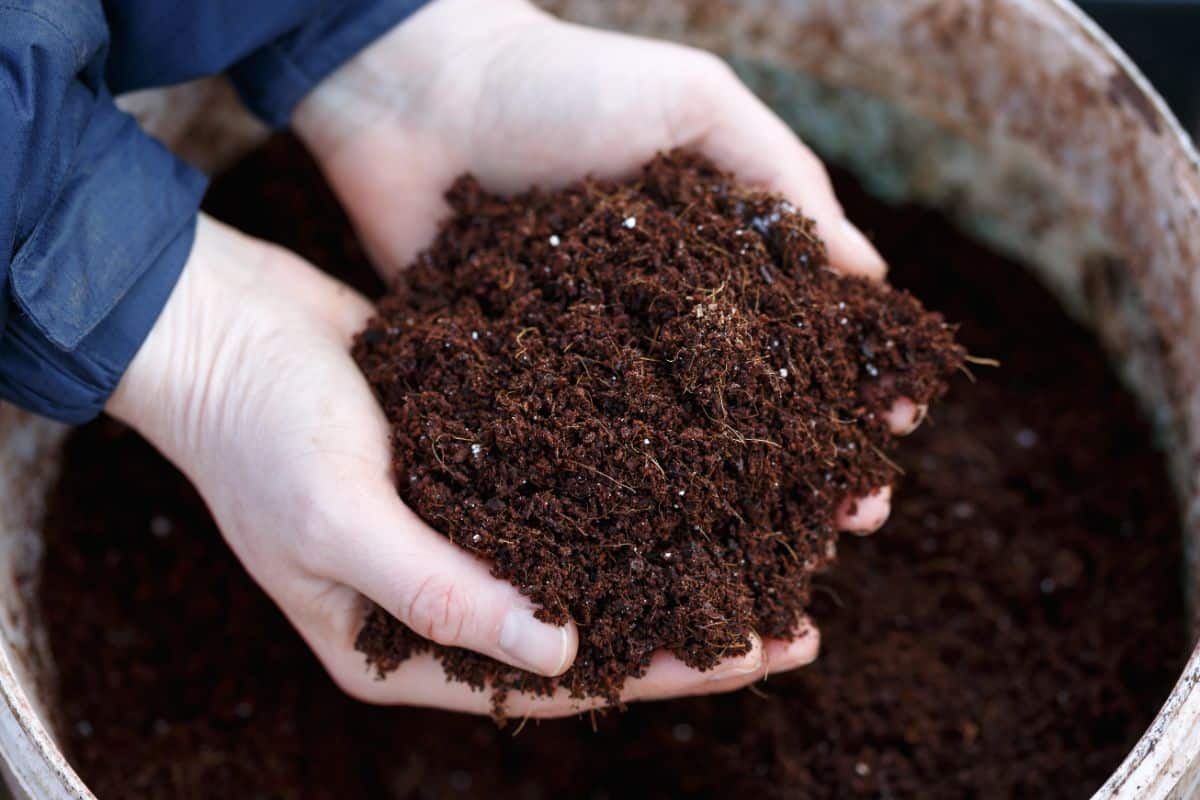
When most gardeners think about mulching, they often consider bark mulches or maybe straw or hay. However, compost makes a wonderful organic mulch that can suppress weeds and improve the health of your garden soil over time. What’s more, well-aged compost can be an incredibly attractive mulch as it has a relatively uniform composition and deep, dark color.
If you’d like to use compost as mulch, spread about 1 to 3” of compost across your ornamental and vegetable beds in spring or autumn. Like other mulches, compost should not be placed directly against plant stems as this can cause moisture issues and rot. As the compost degrades over time, it will enrich the soil and help feed your plants, and you can touch up your beds with fresh compost as needed to maintain the look of your garden.
6. Make your own potting mix
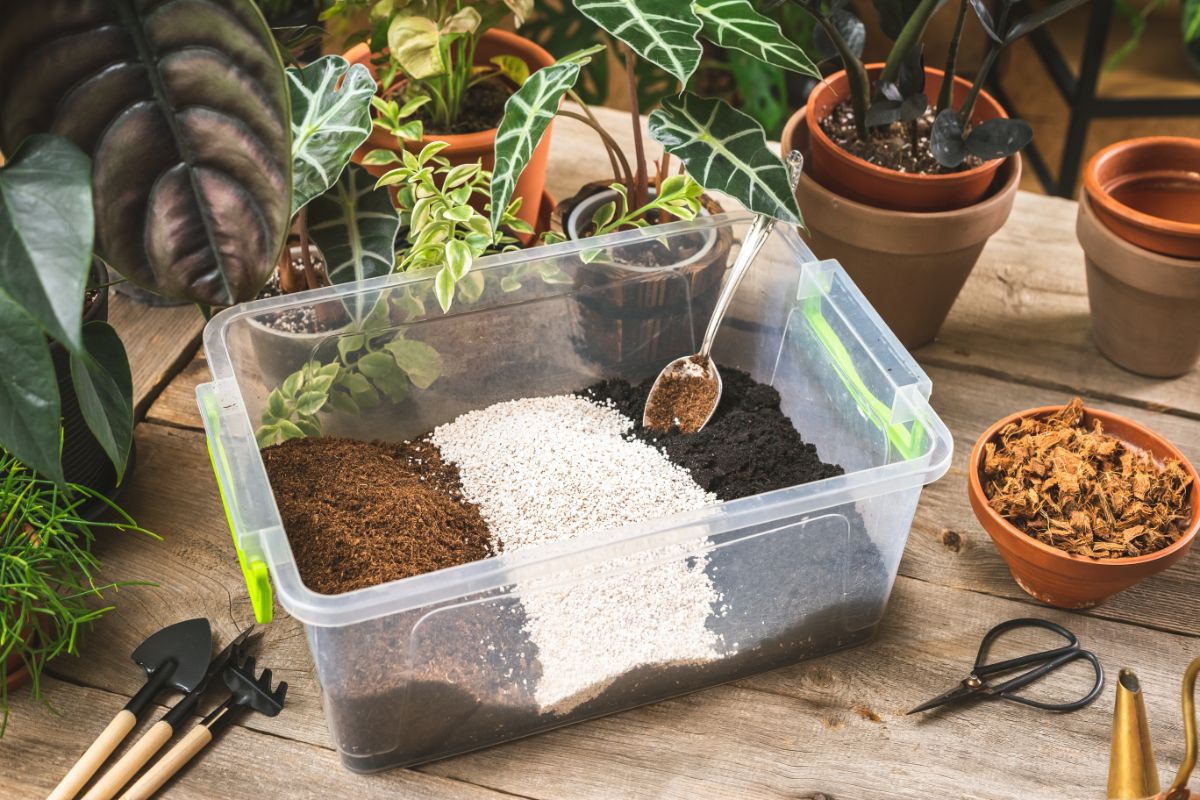
Potting mixes can get pricey, and they often use non-sustainable ingredients, like peat moss, which aren’t that great for the environment. Additionally, if you keep different types of plants, you may need to purchase different varieties of potting mixes to suit the needs of tropical plants, succulents, and so on! Sorting through all those premade potting mixes can definitely be a headache, but if you have a backyard compost pile, you can easily make your own DIY potting mixes with compost.
For a very basic potting mix recipe, mix together 2 parts compost and 2 parts coconut coir. Then blend in 1 part wood chips (or vermiculite) and stir the mixture well.
This mixture can be used on most indoor plants and container plants too. You can also alter the recipe slightly by mixing in limestone or sulfur to adjust pH levels for certain plant types. Alternatively, if you want to make a potting mix for succulents and cacti, you can further increase the drainage potential of your potting mix by adding in extra perlite, vermiculite, or sand.
7. Grow better melons and pumpkins
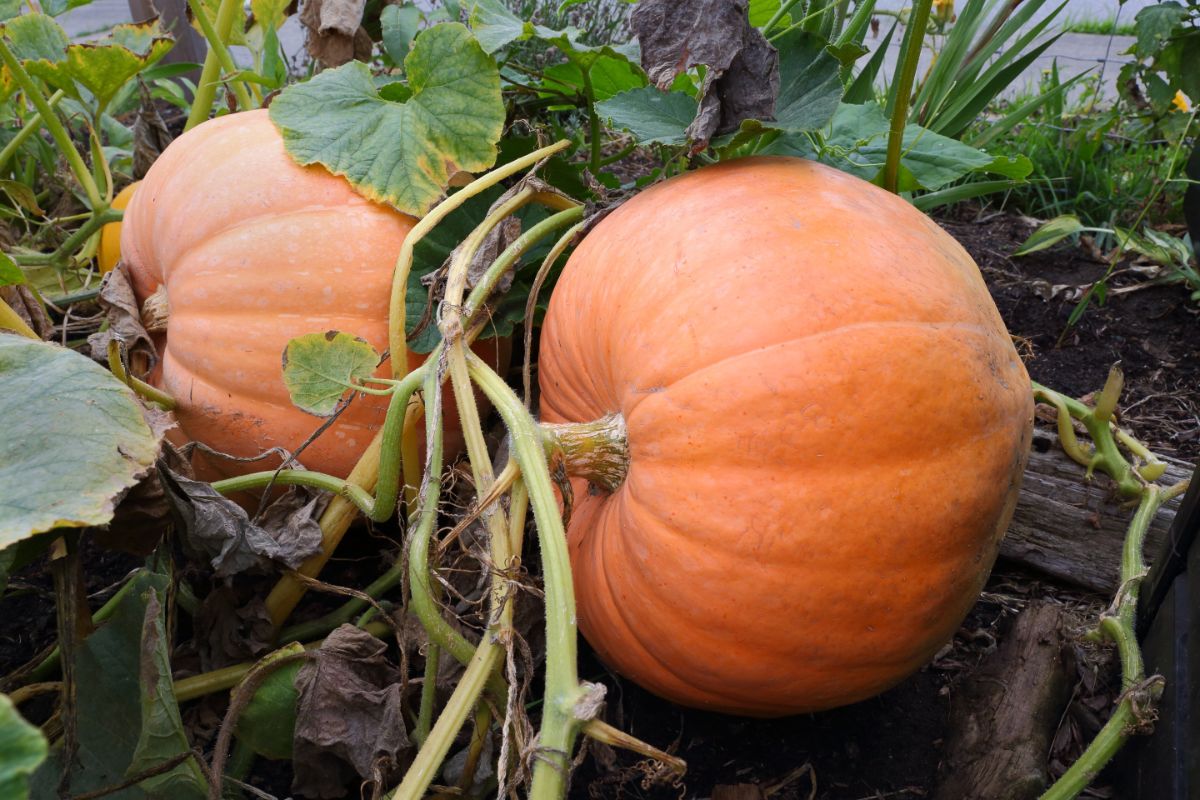
Pumpkins, melons, and other heavy-feeding plants can suffer from nutrient-poor soil, and the resulting plant will produce smaller fruit. But if you want to grow massive pumpkins and melons, adding lots of compost at the time of planting can help.
Pumpkins love compost so much that wayward seeds that find their way into compost piles often end up sprouting. If you’ve ever accidentally grown a “compost pumpkin,” you know how large these heavy-feeding plants can get when they have access to lots of nutrient-rich compost!
But if you’d prefer to grow your pumpkins and melons in your garden instead, amend the soil with quality compost before planting your pumpkins. You can also sprinkle a bit of compost into the planting hole when adding transplanted pumpkin seedlings, and you can side-dress plants throughout the growing season too!
In fact, if you grow lots of pumpkins, you may even want to compost directly in your garden beds by creating melon pits.
8. Refresh your houseplants
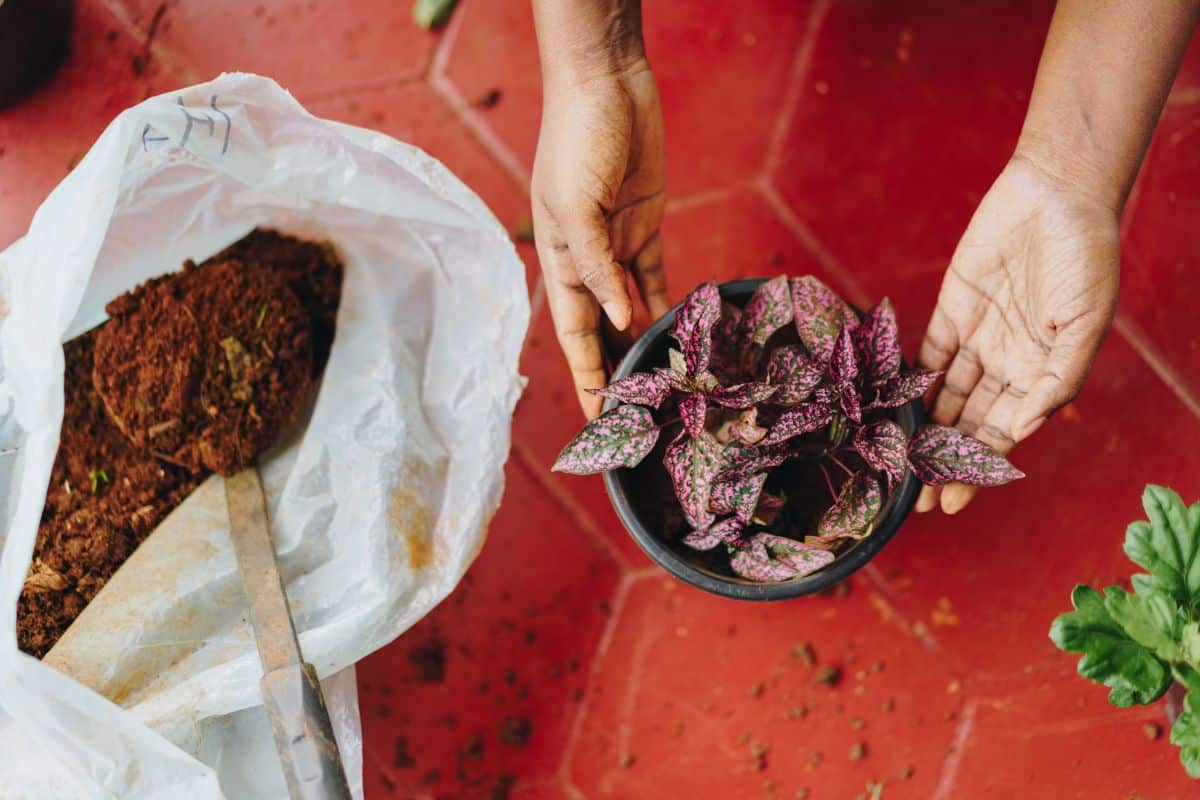
Just like garden soil, the potting mix you use on your houseplants can get depleted over time and become overly compact due to frequent watering. This can result in potting mixes that don’t drain well and can affect the growth of your plant.
To prevent this from happening, you can replenish your houseplant soil by amending it with compost or applying a thin top dressing of compost in spring or autumn. Your plants will appreciate the extra nutrients, and compost can reduce the amount of fertilizer you’ll need to use on your plants as well!
While it’s always important to use properly aged compost to avoid accidentally burning your plants, it’s particularly critical that any compost you use indoors is fully matured. Finished compost shouldn’t have any unpleasant odors, and it should only smell a bit earthy, but unfinished compost can be smelly, and you definitely don’t want that in your home! To avoid this, only use compost that is dark in color, has a uniform composition (no obvious food debris), and doesn’t smell off.
9. Perk up perennials
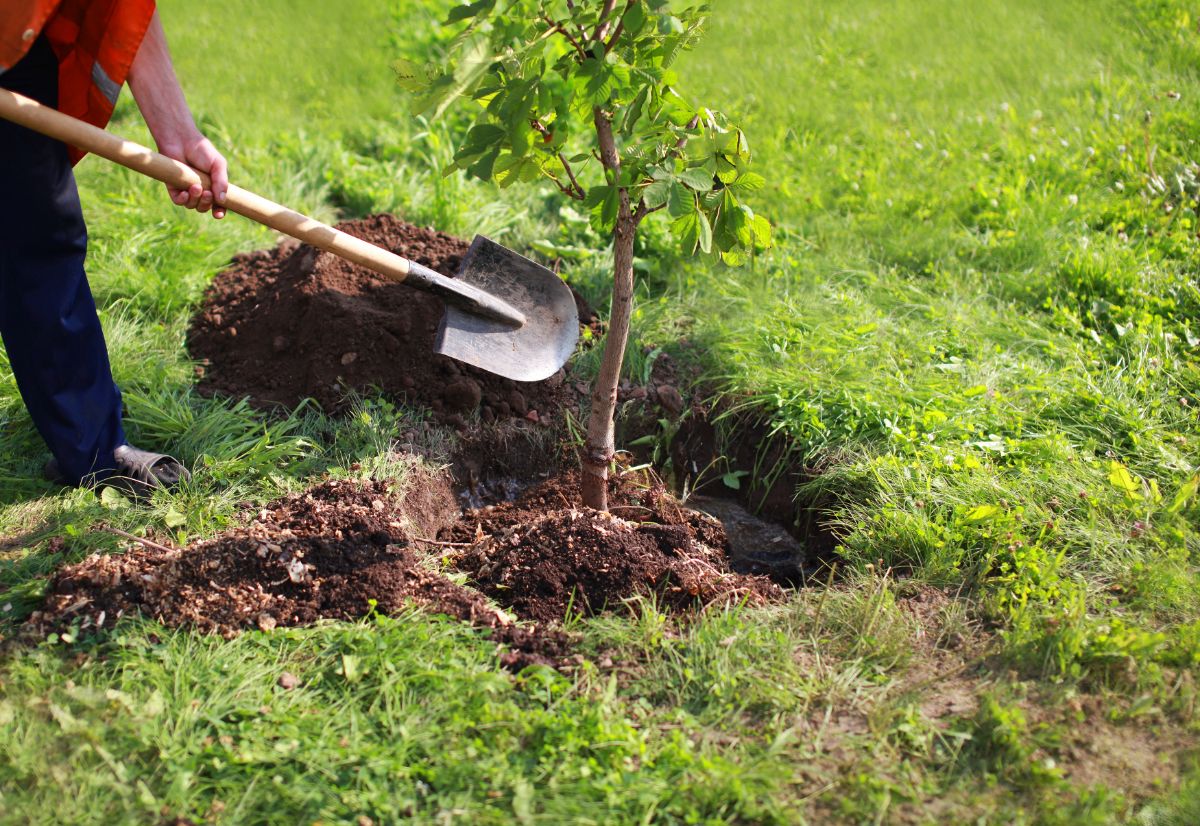
If you’re planting new flowering perennials, shrubs, or trees, you can use compost to help your plants settle into your garden more quickly and boost plant growth too.
After digging the hole for your new plants, mix some compost into the soil you removed from the hole and then backfill the hole with the amended earth. Adding compost to your plants in this way will provide them with extra nutrients, but it also improves the health of the surrounding soil, ensuring that it will drain well.
For small perennials, you can use about 2 to 4 cups of compost per planting hole. For larger shrubs and trees, use about 1 part compost per 10 parts soil.
10. Feed bulbs
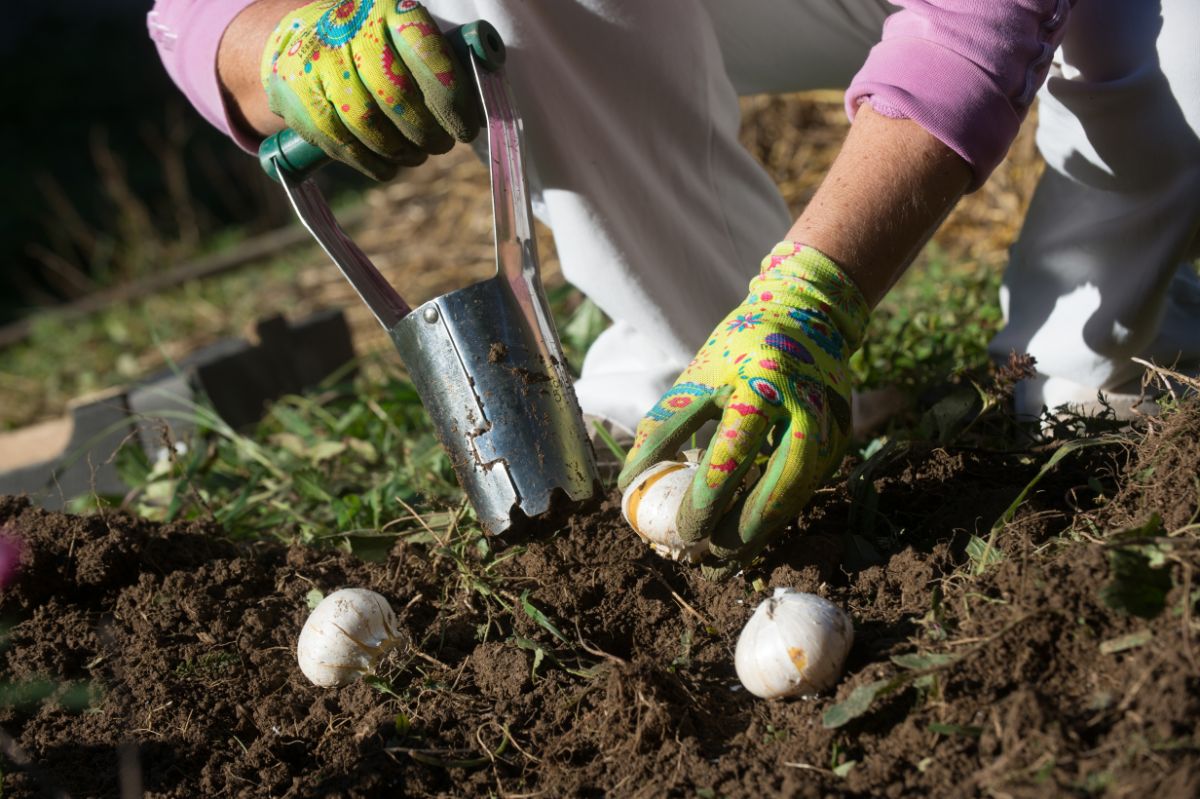
Just like with perennials, adding compost into the planting holes when sowing flower bulbs in autumn can improve the health of your plants and help you get more spring flowers. Simply mix a handful or two of compost into the soil around your new bulbs and then backfill the hole with the soil. Come spring, you’ll be impressed with the amount of crocuses, daffodils, and hyacinths that sprout in your garden beds!
11. Spruce up your lawn

Instead of using chemical fertilizers on your grass lawn, try out compost instead. An all-natural product, compost will strengthen your grass and help you grow a lusher lawn. But, unlike synthetic fertilizers, it will also improve the health of your soil.
On established lawns, you can use compost as a soil amendment by spreading a light layer of compost over your yard with a broadcast spreader. For a lighter application, one pass with the broadcast spreader may be enough; however, you can apply a heavier application by passing over your lawn 2 or 3 times in a crisscrossed pattern.
Alternatively, if you don’t have a broadcast spreader, you can add 2 to 4 shovelfuls of compost in piles dotted across your lawn. Then, simply spread out the compost with a rake to distribute it evenly across your grass.
For new lawns, you can add even more compost. First, prepare your lawn for planting by leveling out the soil, plucking out weeds, and removing any stray stones. Then spread a 1 to 2” layer of compost across your property about a week or two before you intend to plant your grass seed, as this will allow the compost to settle into the earth a bit.
After applying compost to your lawn, water it in well to encourage the nutrients to blend with your soil and make them more accessible to plant roots.
Frequently asked questions
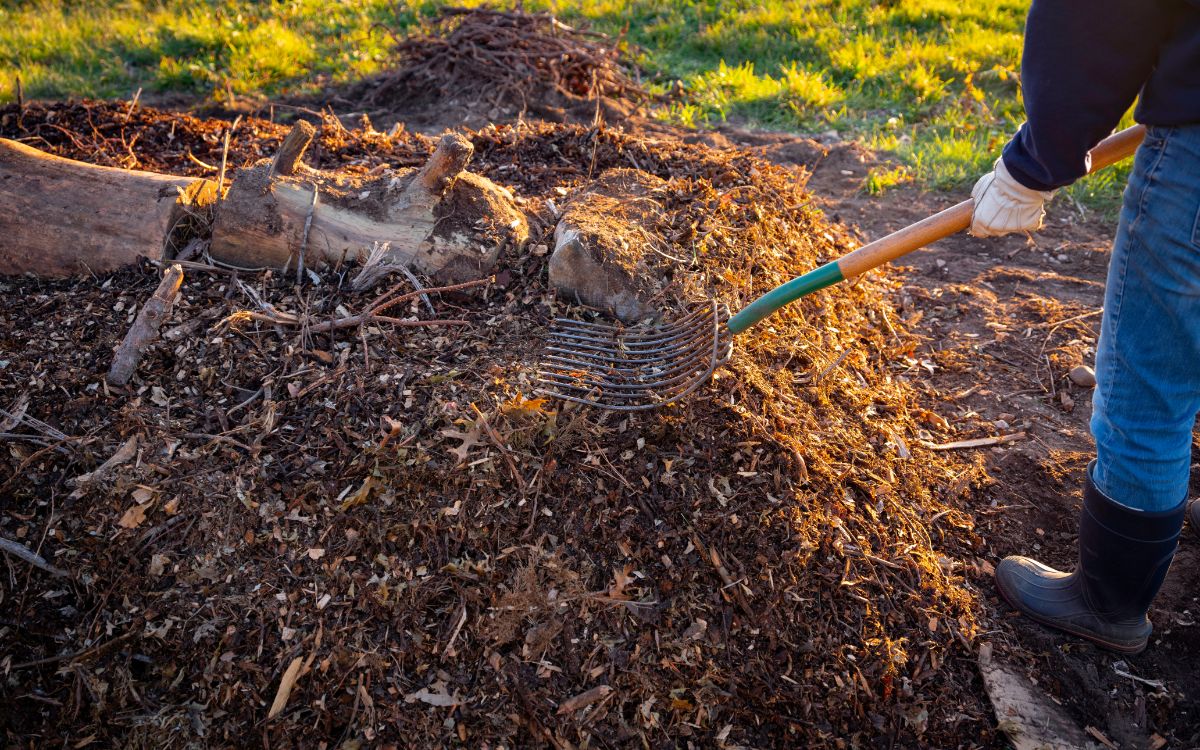
You can plant directly into finished compost, but this is not ideal. While compost has a lot of nutrients, most composts don’t contain all of the nutrients your plants need to grow, which is why compost is often used in conjunction with quality organic fertilizers. Additionally, pure compost won’t drain properly, which can inhibit your plant’s development.
Compost that hasn’t finished decomposing may emit unpleasant odors, and it can contain bits of unprocessed food, which can attract pests. Additionally, because it hasn’t finished breaking down completely, unfinished compost won’t be as useful for plants since food scraps and yard waste need to break down fully to release nutrients in a form that’s usable for plants.
Depending on the compost method you use, compost can take anywhere from a few weeks to over a year to finish processing. Hot composting is usually the quickest way to produce finished compost; however, Bokashi compost is quite fast as well. Cold composting, on the other hand, takes a year or more to finish.
The best time to add compost to gardens is either in early spring or late fall after your plants have begun to die back. At these times of the year, garden beds are mostly empty, so it's much easier to add compost. Autumn is also a good time to spread manure in gardens since the product can break down in place over the course of the winter and be ready for planting in spring.
No, filling up garden beds with pure compost is not recommended. While compost is a useful additive, if you use too much compost, garden beds won’t drain properly, and other problems may arise as well. You can use up to 30% compost in garden beds and 25% compost in pots and other growing containers.
Generally speaking, the best compost-to-soil ratio is 1 part compost to 4 parts soil. This blend provides plenty of nutrients to your plants from the compost, but it is also well-draining thanks to the addition of the soil.
Summary

Compost is one of the most effective ingredients that you can add to a garden. But if you’re new to working with compost, it can feel a bit intimidating to use it for the first time. The good news is that compost is a super versatile product, and it’s very forgiving, so you don’t need to worry about messing anything up when you add compost to your garden!
From making your own compost tea to using compost to create a rich and eco-friendly potting mix, there are tons of ways to get the most out of your compost. But if you haven’t already started composting at home, you’ll definitely want to give it a try this year!
Outdoor composting is one of the most popular composting methods, and it will generate the largest volume of compost. However, you can also compost indoors with worm composting or Bokashi. If you’ve never composted before, check out our guides on composting, and then pick up your own compost bin and give your kitchen scraps and lawn waste a new life as compost!

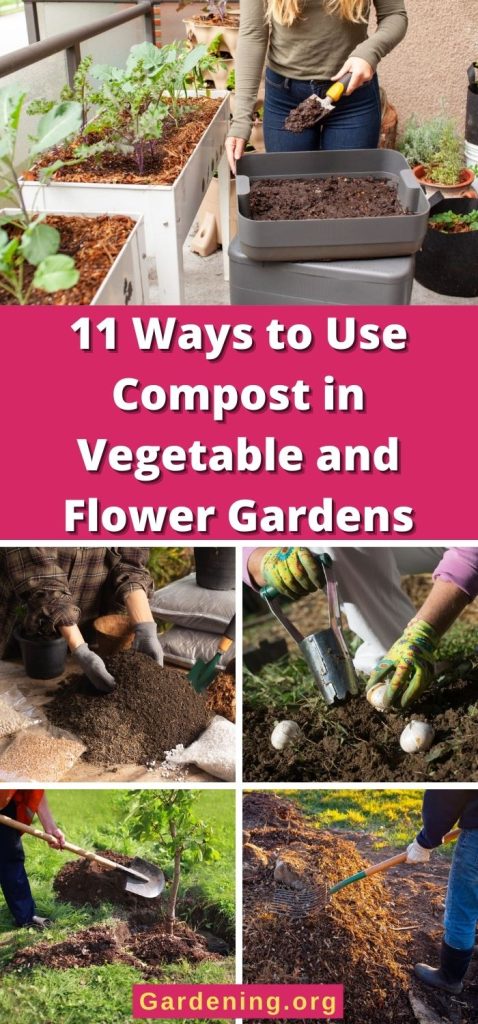
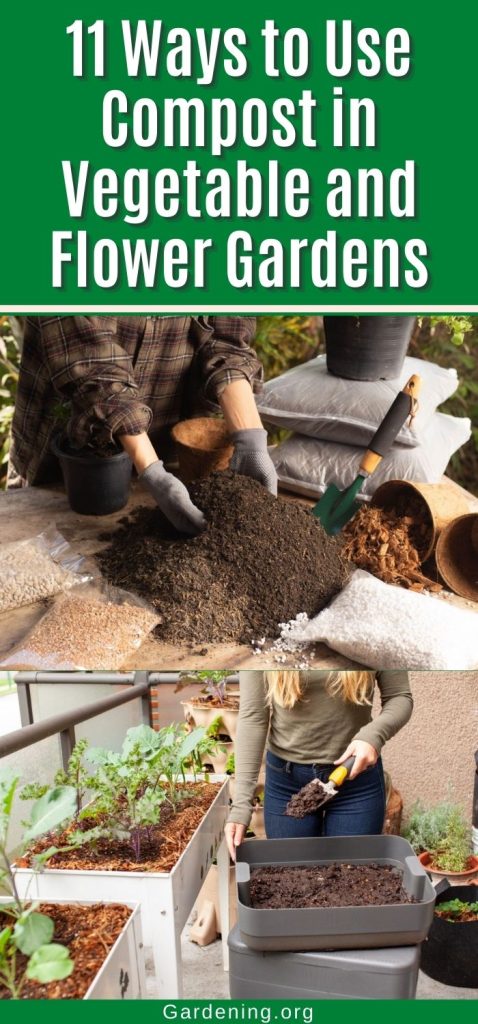
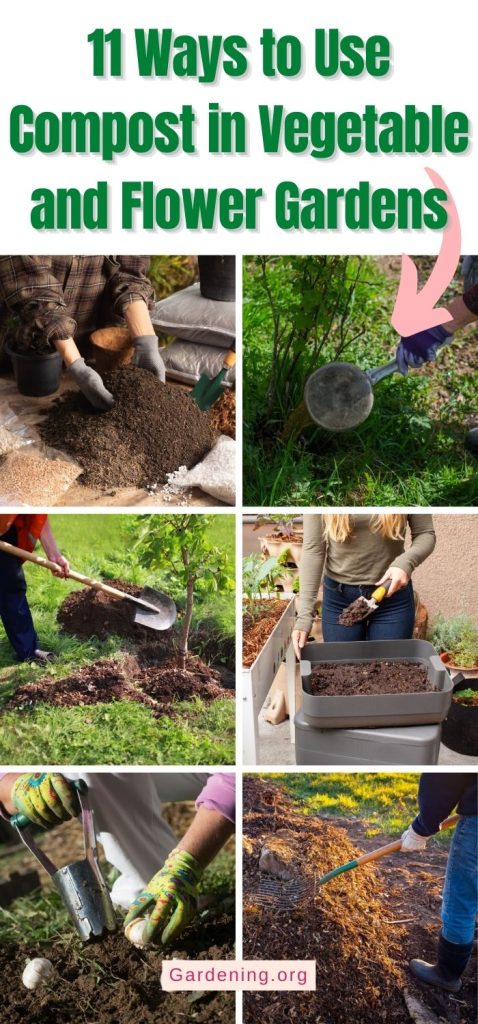
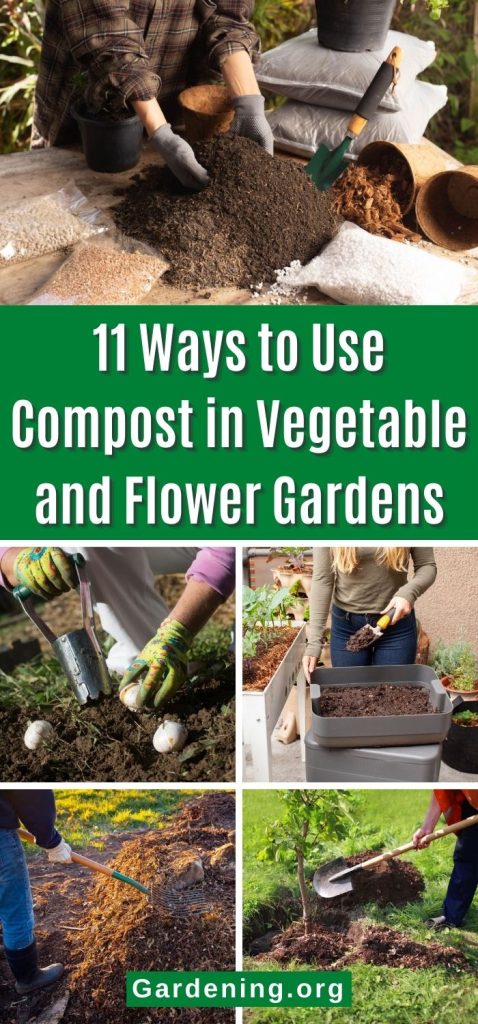
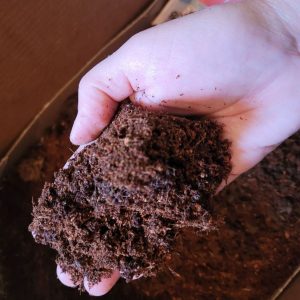

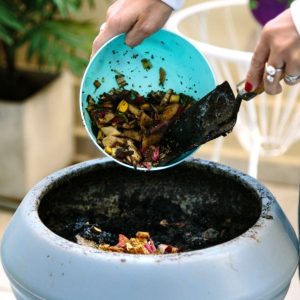

Leave a Reply